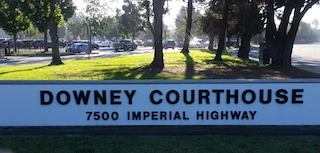In many DUI cases, especially those involving traffic accidents and police finding someone asleep in their car on the roadside, the prosecution and the DMV will seek to introduce testimony calculating a blood alcohol content (BAC) when the suspect last drove by using reverse extrapolation.
This is a way of adding to one’s later-acquired BAC based on the time that elapsed since one last drove, using an assumed rate of ethanol absorption (BAC decrease).
Even the most-used DUI expert witnesses consistently used by the prosecution refuse to endorse reverse extrapolation as reliable, yet the DMV and even some prosecutors continue to try to smuggle in testimony with calculations of BAC based on reverse extrapolation. This is a reoccurring problem that every competent DUI attorney must be ready to combat.
This second assumption further involves the DUI prosecution lab employee’s (aka expert’s) assumption that the “burn-off” rate was .015 percent per hour (sometimes the assumed rate is .02 percent).
Over the DUI defense attorney’s objection, how does the DUI prosecution know that the DUI arrestee was eliminating (assuming he or she was eliminating rather than still absorbing) at that rate and not at .005 percent, .3 percent or some other possible scientific rate?! Quite simply, the DUI prosecution does not know. The DUI prosecution laboratory employee merely assumes that the DUI arrestee was eliminating and that he or she eliminated at the average rate.
The problem is that everyone has a different metabolism, and even a given person will metabolize alcohol at different rates depending on many variables. These include one’s age, height, gender, weight, body fat percentage, hematocrit levels, kidney function, any liver abnormalities, what one drank, over what period of time, what one ate before and while drinking and even one’s mood (i.e. depression or happiness).
In one important study, researchers found a wide range of metabolism rates: some individuals can absorb alcohol and reach peak blood-alcohol levels ten times faster than others. (Kurt Dubowski, “Absorption, Distribution and Elimination of Alcohol: Highway Safety Aspects,” Journal on Studies of Alcohol (July 1985)).
As a result, scientists have concluded that the practice of estimating earlier BAC levels in DUI cases is highly inaccurate and should be discouraged. From the recognized expert in the field, Professor Dubowski of the University of Oklahoma:
It is unusual for enough reliable information to be available in a given case to permit a meaningful and fair value to be obtained by retrograde extrapolation. If attempted, it must be based on assumptions of uncertain validity, or the answer must be given in terms of a range of possible values so wide that it is rarely of any use. If retrograde extrapolation of a blood concentration is based on a breath analysis the difficulty is compounded.”
21 Journal of Forensic Sciences 9 (Jan. 1976); Reprinted in “Forensic Alcohol Supervisor Course,” California Criminalistics Institute – California Department of Justice, hosted by OC Crime Lab, 1998.
“[T]he practice of making back estimation of a person’s BAC is inevitably a controversial issue in DUI litigation and should be avoided whenever possible.” A.W. Jones & Barry K. Logan, Drug Abuse Handbook 2012, Reprinted in “Forensic Alcohol Supervisor Course,” California Criminalistics Institute – California Department of Justice, hosted by OC Crime Lab, 2000.
“Making back extrapolations of BAC is not recommended because of the wide variations in absorption, distribution, and elimination patterns of ethanol both within and between different individuals.”
Id. at 347, citing: Allanowai, et. al., “Ethanol Kinetics – Extent of Error in Back Extrapolation Procedures.” 34 Br. J. Clin. Pharmacology 316 (1992); Lewis, “Back Calculation of Blood Alcohol Concentrations,” 295 Br. Med. J. 800 (1987).
For these reasons, we move to exclude all testimony concerning reverse extrapolation with a motion to suppress both at the DMV and in court, when anticipated.
Contact us.  Downey Courthouse
Downey Courthouse